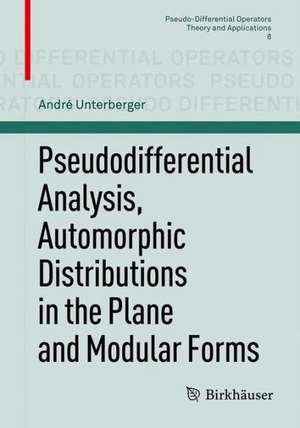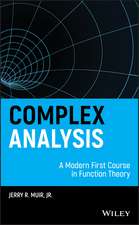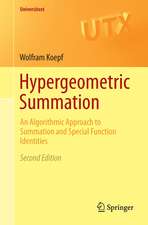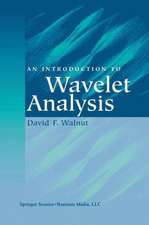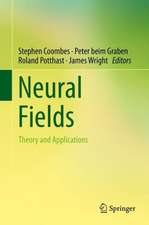Pseudodifferential Analysis, Automorphic Distributions in the Plane and Modular Forms: Pseudo-Differential Operators, cartea 8
Autor André Unterbergeren Limba Engleză Paperback – 6 aug 2011
The book is addressed to a wide audience of advanced graduate students and researchers working in analytic number theory or pseudo-differential analysis.
Preț: 390.63 lei
Nou
Puncte Express: 586
Preț estimativ în valută:
74.75€ • 79.93$ • 62.32£
74.75€ • 79.93$ • 62.32£
Carte tipărită la comandă
Livrare economică 18 aprilie-02 mai
Preluare comenzi: 021 569.72.76
Specificații
ISBN-13: 9783034801652
ISBN-10: 3034801653
Pagini: 308
Ilustrații: VIII, 300 p.
Dimensiuni: 168 x 240 x 20 mm
Greutate: 0.48 kg
Ediția:2011
Editura: Springer
Colecția Birkhäuser
Seria Pseudo-Differential Operators
Locul publicării:Basel, Switzerland
ISBN-10: 3034801653
Pagini: 308
Ilustrații: VIII, 300 p.
Dimensiuni: 168 x 240 x 20 mm
Greutate: 0.48 kg
Ediția:2011
Editura: Springer
Colecția Birkhäuser
Seria Pseudo-Differential Operators
Locul publicării:Basel, Switzerland
Public țintă
ResearchCuprins
Introduction.- The Weyl calculus.- The Radon transformation and applications.- Automorphic functions and automorphic distributions.- A class of Poincaré series.- Spectral decomposition of the Poincaré summation process.- The totally radial Weyl calculus and arithmetic.- Should one generalize the Weyl calculus to an adelic setting?.- Index of notation.- Subject Index.- Bibliography.
Recenzii
From the reviews:
“The book is devoted to explaining a close relationship between the pseudodifferential analysis and the well-known theory of automorphic functions and modular forms on the upper Poincaré half-plane II, or their generalization as automorphic distributions. … the book is perfectly readable and rich with analytic details for both researchers in pseudodifferential analysis and for number theorists.” (Đȭ Ngọc Diệp, Mathematical Reviews, November, 2013)
“In this book the author explains very beautiful links between pseudodifferential analysis and the theory of nonholomorphic modular forms on the classical modular group … . The book is excellently written and represents an extremely valuable contribution for the two research communities – analysts from PDEs and pseudodifferential operators and number theorists. It exhibits a lot of new and original links between the two research areas. It is self-contained and easily accessible for a broad readership.” (Sören Kraußhar, Zentralblatt MATH, Vol. 1243, 2012)
“The book is devoted to explaining a close relationship between the pseudodifferential analysis and the well-known theory of automorphic functions and modular forms on the upper Poincaré half-plane II, or their generalization as automorphic distributions. … the book is perfectly readable and rich with analytic details for both researchers in pseudodifferential analysis and for number theorists.” (Đȭ Ngọc Diệp, Mathematical Reviews, November, 2013)
“In this book the author explains very beautiful links between pseudodifferential analysis and the theory of nonholomorphic modular forms on the classical modular group … . The book is excellently written and represents an extremely valuable contribution for the two research communities – analysts from PDEs and pseudodifferential operators and number theorists. It exhibits a lot of new and original links between the two research areas. It is self-contained and easily accessible for a broad readership.” (Sören Kraußhar, Zentralblatt MATH, Vol. 1243, 2012)
Textul de pe ultima copertă
Pseudodifferential analysis, introduced in this book in a way adapted to the needs of number theorists, relates automorphic function theory in the hyperbolic half-plane Π to automorphic distribution theory in the plane. Spectral-theoretic questions are discussed in one or the other environment: in the latter one, the problem of decomposing automorphic functions in Π according to the spectral decomposition of the modular Laplacian gives way to the simpler one of decomposing automorphic distributions in R2 into homogeneous components. The Poincaré summation process, which consists in building automorphic distributions as series of g-transforms, for g Î SL(2;Z), of some initial function, say in S(R2), is analyzed in detail. On Π, a large class of new automorphic functions or measures is built in the same way: one of its features lies in an interpretation, as a spectral density, of the restriction of the zeta function to any line within the critical strip.
The book is addressed to a wide audience of advanced graduate students and researchers working in analytic number theory or pseudo-differential analysis.
The book is addressed to a wide audience of advanced graduate students and researchers working in analytic number theory or pseudo-differential analysis.
Caracteristici
Presents pseudodifferential analysis tailored to the needs of number theorists Besides containing novel features of the Weil calculus, it may constitute an approach to non-holomorphic modular form theory, suitable for analysts Gives hints to possible generalizations of the construction of new classes of automorphic functions Explains how and why pseudodifferential analysis should be developed in the adelic setting Series of Kloosterman sums, some of which are of a novel kind, play a major role in several parts of the book Includes supplementary material: sn.pub/extras
